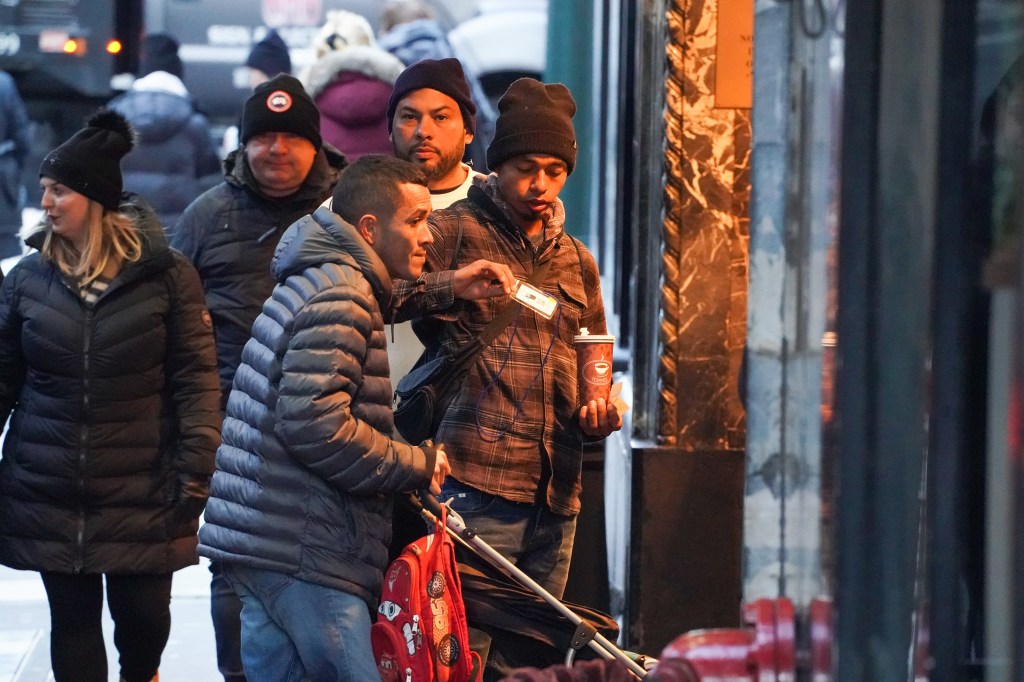Migrants signing up for NYC ID cards in record numbers with more than 112K awarded in 2023
Contact The Author
A record number of migrants are taking their first step to becoming residents of New York City by signing up for IDNYC cards, The Post has learned.
The municipal card — part of the largest such program in the US and launched in 2015 by then-Mayor Bill de Blasio — can be used as personal identification and verification to obtain local services ranging from health care and school enrollment for kids to use of the public library and for employment and some financial transactions.
The number of new IDNYC cards issued soared nearly 50% from last year to 2023: with 82,085 given out between Jan. 1 and Dec. 15, 2022, and 112,238 in the same period this year — coinciding with the wave of asylum-seekers entering the city, according to data obtained by The Post.
People can obtain the card regardless of immigration status — so that includes asylum-seekers and others who came here illegally and lack documentation.
The main Queens Public Library in Jamaica — used as one of the main processing centers for IDNYC applications by the city’s Human Resources Administration — has seen lines of migrants snake around the block in the morning waiting for its doors to open.
“There’ve been lines wrapped around the building — I’ve seen people starting getting here at 3 a.m.,” said Queens LIbrary President and CEO Dennis Walcott.
Walcott said the applicants come from a broad array of regions of the world besides Latin America, coming from as far as Africa.
“It’s an important step in life — having an ID card. We want people to get access to various services,” said Walcott, a former deputy mayor and schools chancellor under then-Mayor Michael Bloomberg.
Mayor Eric Adams’ office said helping gain access to the IDNYC card is part of his administration’s “all-hands-on-deck approach” to address the needs of the newcomers.
“As a result of our efforts to strengthen and expand accessibility to IDNYC for all New Yorkers, we saw a nearly 50 percent increase in new IDNYC enrollments in 2023, when compared with 2022. This comes on the heels of the city expanding the list of eligible documentation for IDNYC to meet the needs of the most vulnerable, including asylum seekers,” said City Hall spokeswoman Kayla Mamelak.
The strategic plan to get migrants IDs was done in tandem with elected officials, community-based organizations, and other city agencies and also deploying the IDNYC Mobile Command Center and increasing informational events, she said.
The Queens Public Library has hosted an IDNYC enrollment center at the main branch since the program’s inception.
“We know from what we have observed that the number of applicants that are seeking IDNYC cards has risen sharply between this year and last year,” said Queens LIbrary spokeswoman Elizabeth de Bourbon.
Because of the winter weather, the city is requiring applicants to request meetings by prior appointment, so they don’t have to wait outside in the cold.
Queens Library’s bilingual staff helps asylum-seekers with their IDNYC applications, and addresses their other needs — whether it be for legal assistance, housing, places where they can get clothing, school support, food pantries or providing job assistance, including resume help.
Enrollment in the library’s English as a Second Language class also shot up 35 percent between this year and last year.
“Through their interactions with the asylum seekers, our staff has found out that most of the people are from Venezuela, Colombia, Ecuador, Peru, Nicaragua, El Salvador, and Haiti,” de Bourbon said.
“They also are seeing people from Mauritania, Mali, Guinea, Bangladesh, India and China. We also have encountered a handful of Russian speakers, potentially from Ukraine.





